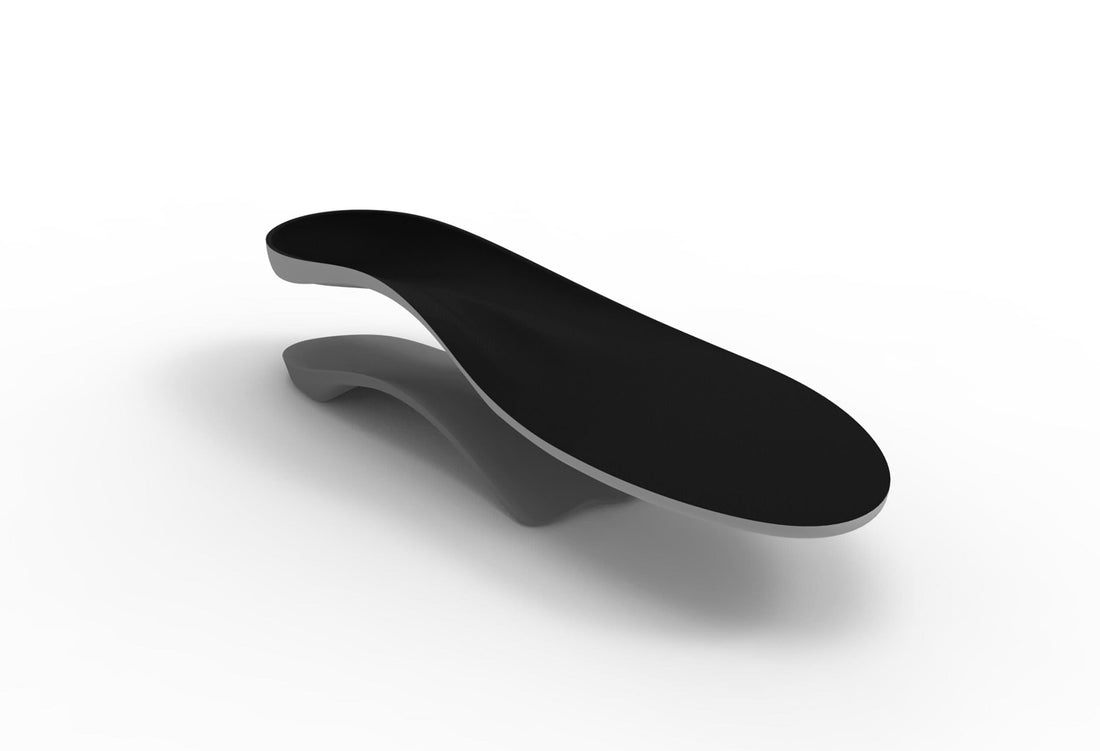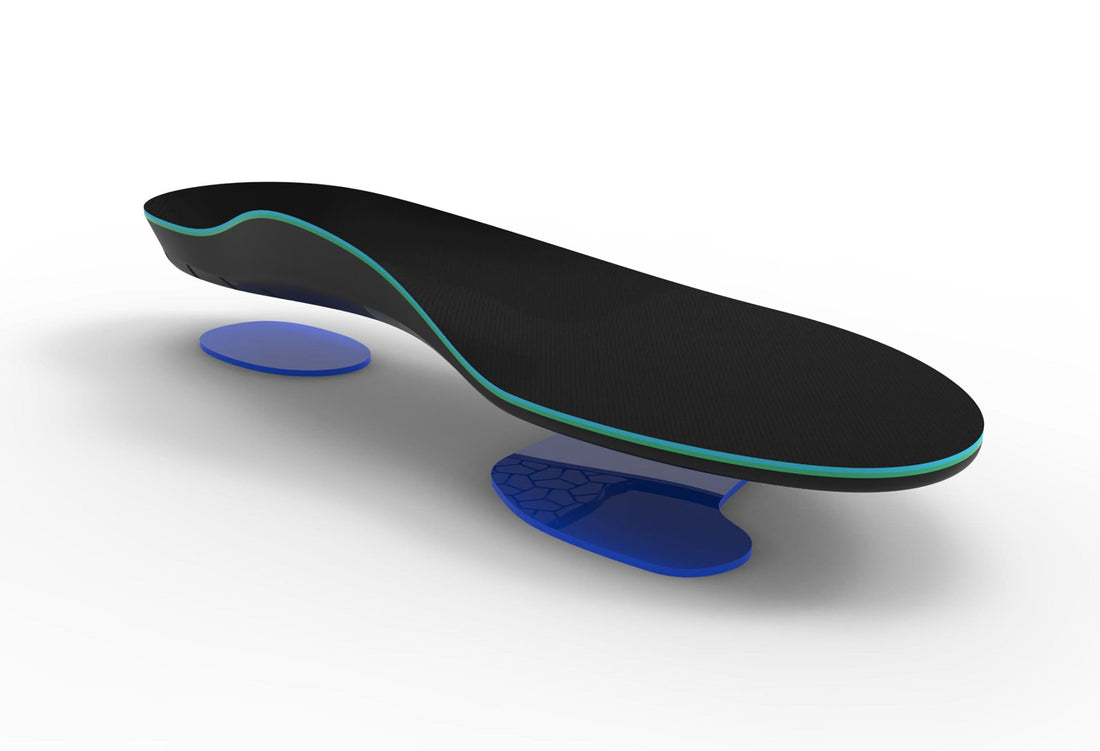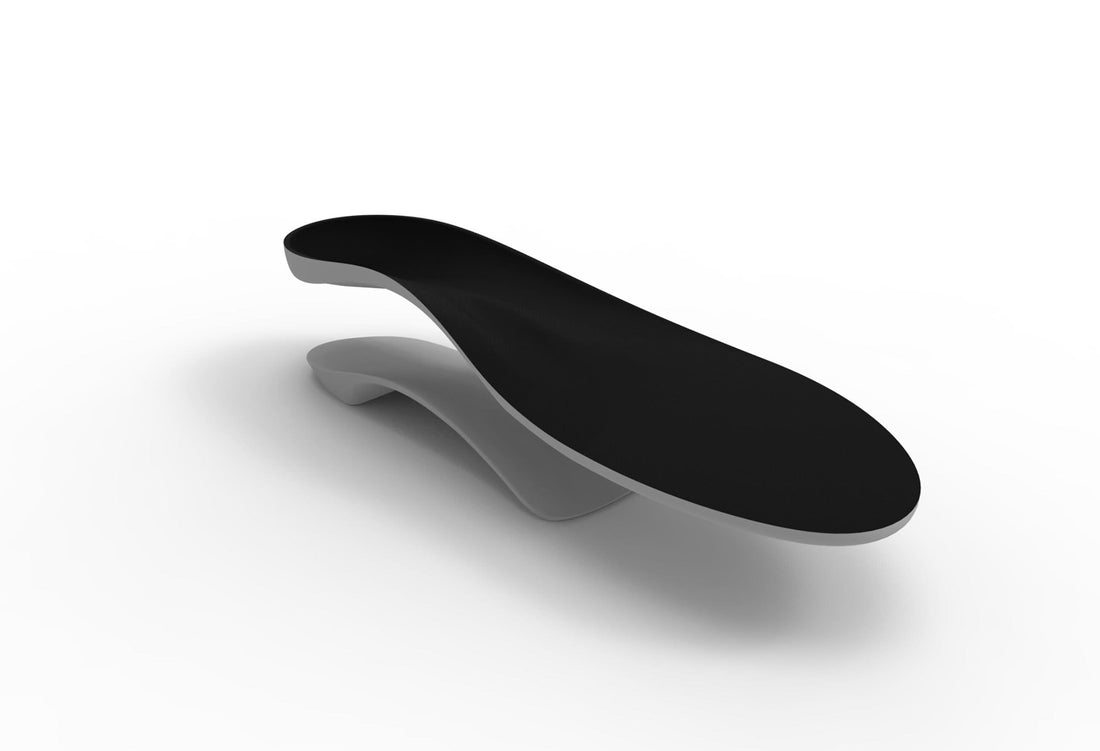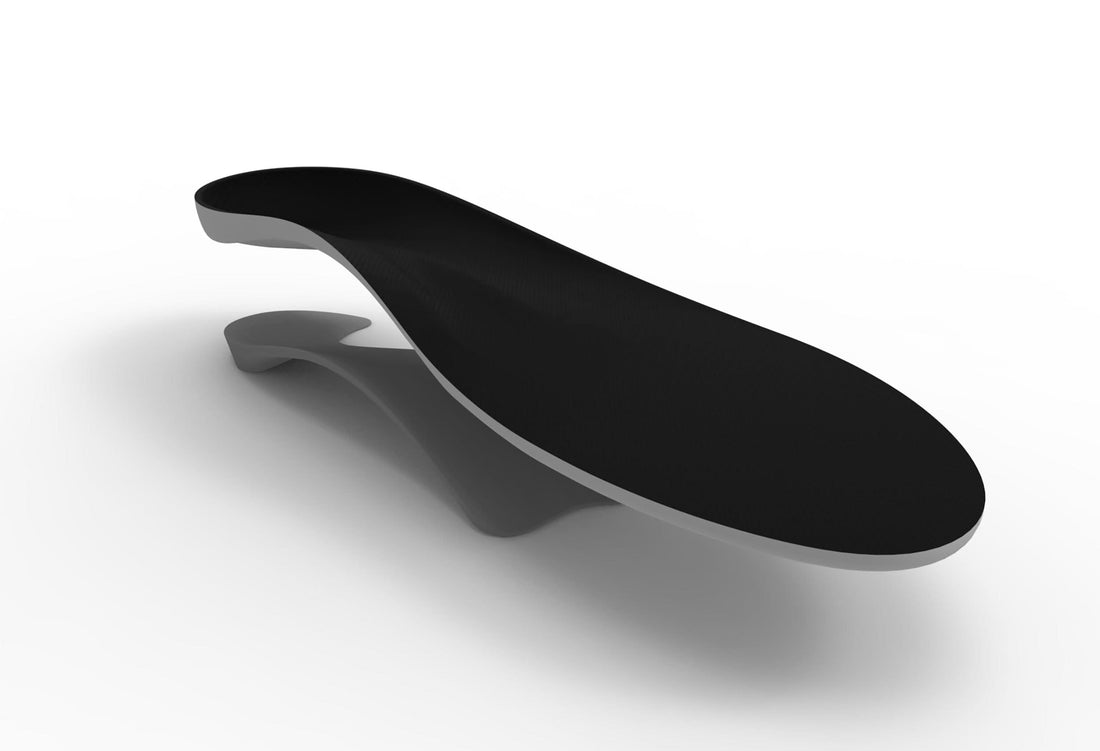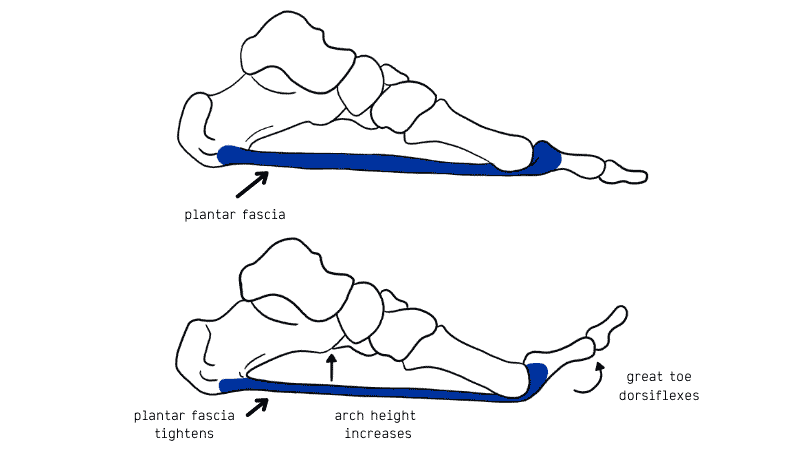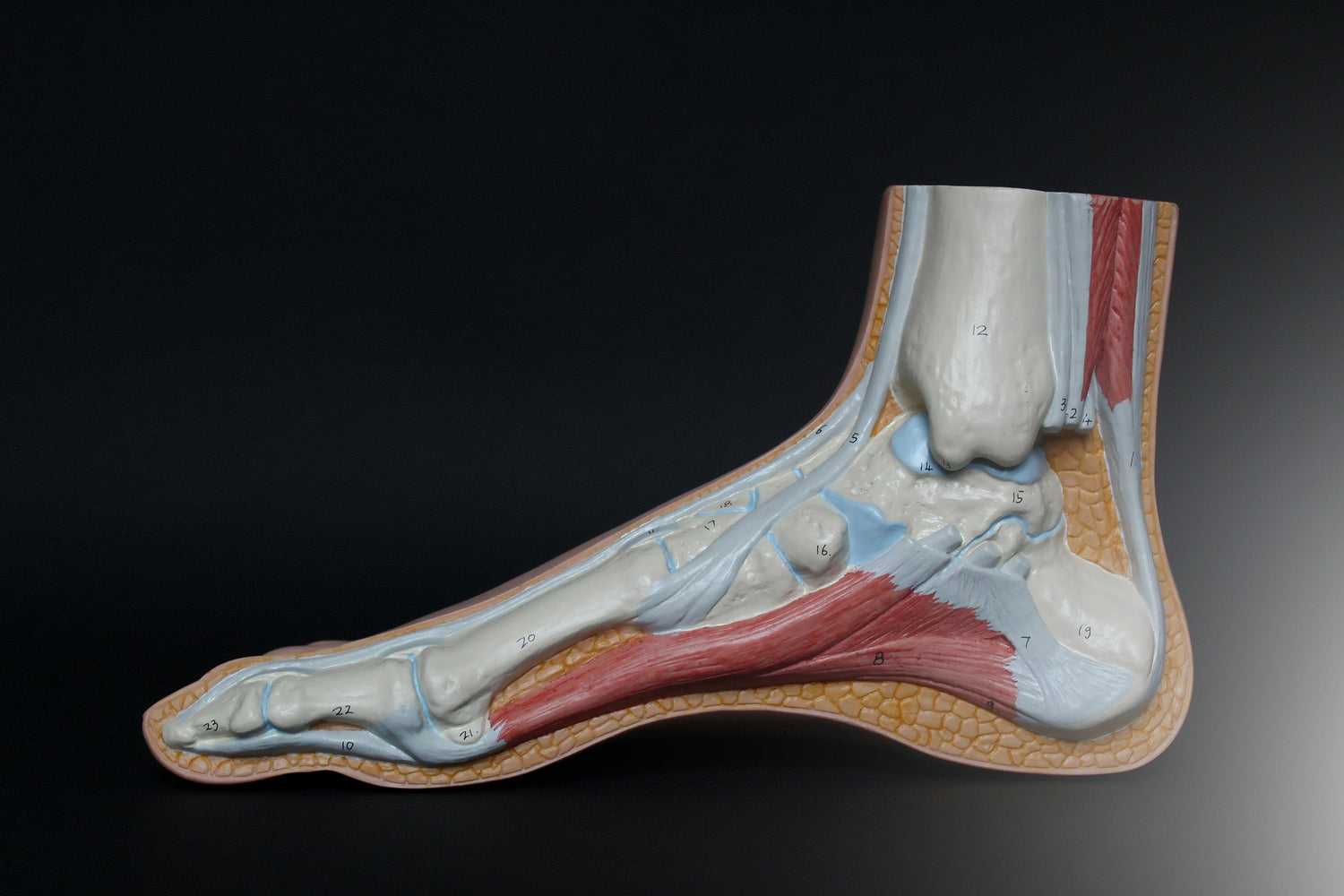Flat Feet and Fallen Arches are terms used to describe feet that have a low or no arch when weight bearing.
There are two types of Flat Feet:
- Rigid Flat Foot. This type of foot is structurally flat, therefore, it has the same appearance when weight bearing and non weight bearing.
- Flexible Flat Foot. This is where the arch is present when non-weight bearing; however, when weight bearing it falls or collapses to a flat foot. This foot type is commonly referred to as Fallen Arches.
Both of these foot types may be asymptomatic; however, they are characterised by excessive pronation of the joints of the foot (commonly the subtalar joint). The forces associated with this excessive pronation commonly results in pathological conditions, such as plantar fasciitis and tibialis posterior dysfunction which may cause pain in the feet.
Cause
A Rigid Flat Foot may be congenital, where the arch never develops when growing. A Rigid Flat Foot can also be acquired due to disease processes involving inflammatory arthritis, neurological conditions such as Charcot neuro-arthropathy or trauma.
A Flexible Flat Foot (fallen arches) may also be congenital where excessive pronation occurs for shock absorption. In some cases this condition may be the result of neurological disease or injury involving muscle weakness, hyper-mobile joints or ligament laxity. These conditions may allow for excessive pronation causing the arch to fall when weight bearing or during activity.
Both of these foot types can result in posture mal-alignment involving the lower back, hips, knees and feet which may result in pain in those areas.
Symptoms
- Arches can be seen as ‘rolling downward’ or collapsing when walking.
- Pain may present in lower back, hips or knees.
- Pain may be present on the bottom of the heels, within the arch, within the ankles or even the forefoot.
- Swelling can occur.
- Pain may occur in the anterior leg muscles
Diagnosis
Diagnosis of Flat Feet or Fallen Arches can be made by your health practitioner and is based on the following:
- Clinical assessment involving visual gait assessment, as well as biomechanical assessment.
- A detailed family and medical history.
- A pain history assessment determining the location of painful symptoms.
- Physical palpation of the feet and painful areas.
- Imaging such as MRI or x-ray can be used by your practitioner to assist in the diagnosis.
Treatment
- Orthotics: Interpod orthotics re-align and support the foot; therefore reducing any excessive stress when walking or during activity. Orthotics can assist with maintaining arch profile and allow for more effective functioning of joints.
- Footwear: A strong supportive, well fitted shoe may assist with reducing excessive pronation and support the joints of your feet. A supportive shoe will also help maximise the function of your Interpod orthotic.
- Padding: Padding may be applied to your shoes or feet by your practitioner to reduce excessive stress.
- Taping or Strapping: Specific taping techniques can be applied by your practitioner to improve foot function.
- Stretches or exercises: Your practitioner may advise certain stretches or exercises to assist with maintaining foot function and reduce painful symptoms.
- Pain medication: Pain medication such as NSAIDs (ibuprofen) may be advised by your practitioner.
- Surgery: If all conservative options have been exhausted, then surgical correction of flat feet may be undertaken.
Prevention
Flat feet or Fallen Arches cannot be prevented due to congenital of nature or from underlying disease process; however, painful symptoms and future pathology from Flat Feet or Fallen Arches may be prevented by the following:
- Orthotics: Continue to wear your Interpod orthotics for work and exercise to provide stability and maintain function of your feet.
- Footwear: Continue to wear supportive shoes to maximise the function of your Interpod orthotic and prevent excessive movement of the joints in your feet.
References
www.medicalnewstoday.com/articles/168608.php
www.nlm.nih.gov/medlineplus/ency/article/001262.htm
www.foothealthfacts.org/footankleinfo/flatfoot.htm
my.clevelandclinic.org/orthopaedics-rheumatology/diseases-conditions/flatfoot.aspx
Frowen, O’Donnell, Lorimer & Burrow. (2010). Neale’s Disorders of the foot (8th Ed.), Elsevier Limited, pgs. 99-100.
Michaud, T. C. (1997). Foot Orthoses and other forms of conservative foot care (Pages 173-175).


